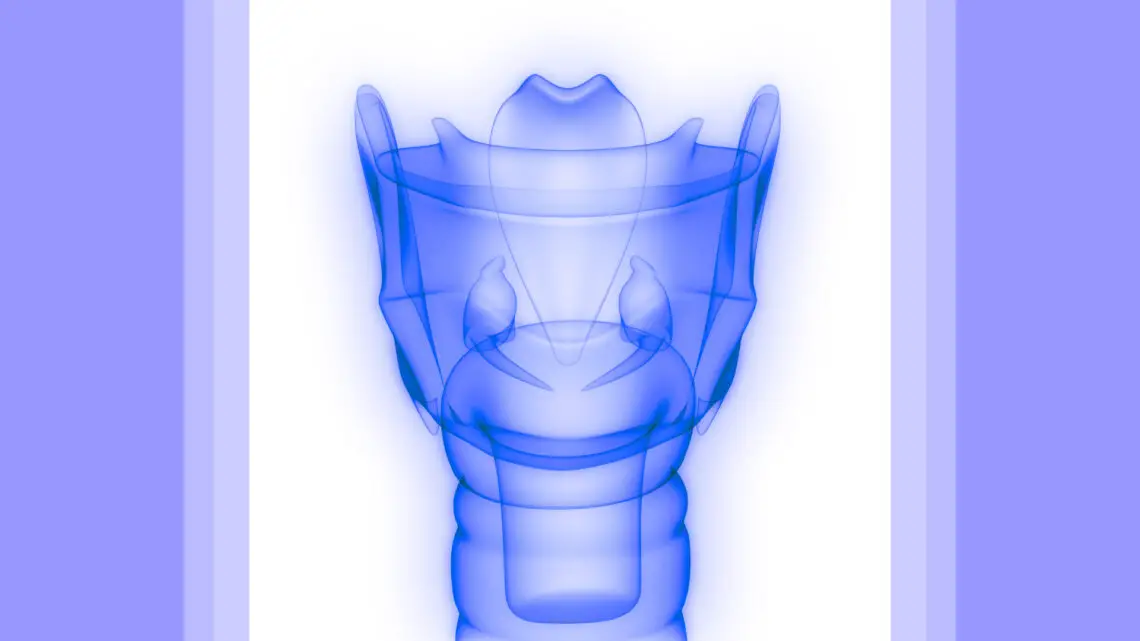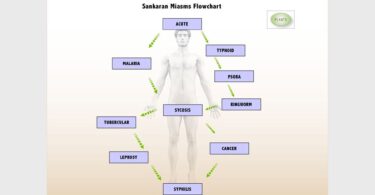Aphorism 72, introduced acute disease manifestation. Hahnemann devotes the whole of Aphorism 73 to furthur explain this. He first explains acute exacerbation of chronic disease and how to perceive it clinically:
As regards acute diseases, they are either of such a kind as attack human beings individually, the exciting cause being injurious influences to which they were particularly exposed. Excesses in food, or an insufficient supply of it, severe physical impression, chills, over heatings, dissipation, strains, etc., or physical irritations, mental emotions, and the like, are exciting causes of such acute febrile affections; in reality, however, they are generally only a transient explosion of latent psora, which spontaneously returns to its dormant state if the acute diseases were not of too violent a character and were soon quelled.
Every remedy picture has peculiar acute ‘ailments from’ and exciting modalities. The symptoms following these exciting factors, are not true acute diseases, but transient explosions of latent psora. They often return to normal with simple diet and rest. An acute remedy prescribed in such a situation is a helpful palliative. This should be followed by a proper constitutional or antimiasmatic remedy [$221].
Eg: a child develops a high fever suddenly one evening when exposed to cold air. The acute remedy prescribed is Belladonna 1M. Belladonna is palliative. The child recurrently gets this evening fever and Belladonna 1M is prescribed every time. Now without an intervening chronic constitutional remedy, 1 year later, the child begins to have middle year infections instead – chronic otitis media with purulent pus discharge.
What has happened here? Psora has progressed from primary expression to secondary expression [fully developed: $223]. External miasma has modified the psoric expression and a deeper organ has been affected (individual to a patient). This progression of psoric disease can follow recurrent emotional causations as well, which progress into functional or psychosomatic diseases.
The homeopathic methodology here is: Detect the chronic or antimiasamtic remedy following the first few prescriptions of Belladonna or indicated acute remedy, to prescribe as a follow through. This keeps psora in primary or latent expression.
Detect the chronic constitutional or antimiasamtic remedy following the first few prescriptions of Belladonna or indicated acute remedy, to prescribed as a follow through. This keeps psora in primary or latent expression. Long term homeopathic evaluation, is thus:
If the choice of chronic remedy is truly simillimum, there will be no further progress of miasmatic disease beyond transient explosions of latent psora or primary psora. If this isn’t seen 2-3 years into homeopathic treatment of simple miasamtic cases (most children), we homeopaths haven’t really treated according to homeopathic methodology, resulting in suppression and progression of disease just like modern medicine.
Or they are of such a kind as attack several persons at the same time, here and there (sporadically), by means of meteoric or telluric influences and injurious agents, the susceptibility for being morbidly affected by which is possessed by only a few persons at one time. Allied to these are those diseases in which many persons are attacked with very similar sufferings from the same cause (epidemically); these diseases generally become infectious (contagious) when they prevail among thickly congregated masses of human beings. Thence arise fevers1, in each instance of a peculiar nature, and, because the cases of disease have an identical origin, they set up in all those they affect an identical morbid process, which when left to itself terminates in a moderate period of time in death or recovery. The calamities of war, inundations and famine are not infrequently their exciting causes and producers
True acute disease expression is either noticed sporadically (infective diarrhea, acute conjunctivitis) or epidemically (plague, cholera, chikungunya). In both situations, and especially in the latter, acute miasma are involved.
The vital force, when susceptible to the miasma following weakening by natural causes and injurious agents, develops sporadic disease. Calamities like war, flood, famine, parasitic infestations, etc where people are forced to be “thickly congregated” help propagate the acute miasma more easily between people resulting in epidemics, especially those miasma known to be contagious or easily transmitted by droplet infection or skin contact.
Required here is the acute intercurrent, the indicated acute remedy based on the acute totality of characteristic symptoms. This is different from the chronic totality. Once the acute phase has passed, follow up with the chronic constitutional remedy and/or antimiasamtic remedy [$240].
Hence for a patient who is on homeopathic treatment with a good homeopath, there are clear advantages.
First: chronic constitutional treatment works as a preventive, where the vital force is fortified enough that it does not easily succumb to epidemics or sporadic illness. The constitutional dose early on, before acute miasmatic symptoms are evident, can abort the attack. If prescribed later, it intensifies the acute characteristic picture.
A word of caution re: the term “constitutional remedy”. No clear definitions exist of what a constitutional remedy is. An individual case may require 3-4 chronic remedies before the basic constitutional remedy is obvious as a predominant picture of symptoms. One may inadvertently call a chronic phase simillimum, a constitutional remedy. So it’s safer to call a remedy the chronic remedy, till over a period of years, it is still seen to cover the basic state. There will be much less disagreement in the global homeopathic community as well.
Here is a reality check:
How many times do we take the time and trouble to perceive the phenomenon of acute disease in practice?
Is finding the one and only “simillimum” the end of the effort for cure? What do we perceive cure to be then in every individual situation?
Do we critically examine the ‘simillimum’ we have chosen based on layers/ levels/direction of cure? What are the criteria for the layers/levels/direction?
Have we made ourselves accountable to healing over time? Have we evaluated our case management and perception of “cure” through Hering’s Laws and Miasmatic progression?
These are tough questions to ask and harder to answer, but they are the only real way to be constructively critical of one’s homeopathic standards. Then we can begin to IMPROVE on methodology for ourselves and for homeopathy globally in a lifelong endeavor.
My personal experience was a bitter pill to swallow, when I saw some of my cases miasmatically deteriorating and apparently ‘improving’ but against Hering’s Law of cure (yes both these are observed in tandem). I had to accept that, though the patient was satisfied that a particular symptom had disappeared and may have praised my ‘homeopathic’ skills, I had not followed the true principles of homeopathic cure of the first aphorism in my remedy choices and series of prescriptions. I had to accept this until I truly understood homeopathic methodology and improved my homeopathic skills. Hard work and re-study of the original writings of masters Hahnemann, Kent, Hering, Boger, Boenninghausen, Caroll Dunham, HC Allen, JF Allen, is a good place to start for a foundation in methodology. The study never ends ….
– sometimes they are peculiar acute miasms which recur in the same manner (hence known by some traditional name), which either attack persons but once in a lifetime, as the smallpox, measles, whooping-cough, the ancient, smooth, bright red scarlet fever2 of Sydenham, the mumps, etc., or such as recur frequently in pretty much the same manner, the plague of the Levant, the yellow fever of the sea-coast, the Asiatic cholera, etc.
Here Hahnemann defines a more specific category of acute miasma, which he calls “fixed” or “constant” miasma [$46] that are well known by some traditional name, as they have a fixed course of symptoms, and usually happen only once in an individuals life. He enumerates them above.
Typically, an individual develops specific antibodies to these miasma (viral, bacterial) over time, right from childhood. These miasma are not known to mutate into different expressions, except under the most adverse circumstances. Is there a connection between the advent of antibiotics over the last 50 years – and the over- prescribing of antibiotics for every viral infection? Has it contributed to these fixed miasms mutating into dangerous varieties with incurable complications like Japanese encephalitis and Sub-acute sclerosing pan encephalitis (SSPE) that follow acute fixed miasms like measles
Footnote 1 The homoeopathic physician, who does not entertain the foregone conclusion devised by the ordinary school (who have fixed upon a few names of such fevers, besides which mighty nature dare not produce any others, so as to admit of their treating these disease according to some fixed method), does not acknowledge the names goal fever, bilious fever, typhus fever, putrid fever, nervous fever or mucous fever, but treats them each according to their several peculiarities.
In his first footnote to “fevers”, Hahnemann reminds us, that any ‘ general name’ given to a fever is unimportant, except when there is a clear miasma identified. Our sole focus remains, to observe the totality of the fever, perceive its homeopathic characteristics and identify the accurate similimum. Nothing else guides the choice to the remedy. The diagnosis of the infecting miasma simply provides knowledge that assists prognosis and management of the acute phase.
Foot note 2 Subsequently to the year 1801 a kind of pupura miliaris (roodvonk), which came from the West, was by physicians confounded with the scarlet fever, notwithstanding that they exhibited totally different symptoms, that the latter found its prophylatic and curative remedy in belladonna, the former in aconite, and that the former was generally merely sporadic, while the latter was invariable epidemic. Of late years it seems as if the two occasionally joined to form an eruptive fever of a peculiar kind, for which neither the one nor the other remedy, alone, will be found to be exactly homoeopathic.
In footnote to scarlet fever, Hahnemann identifies a sporadic eruptive fever with pupura symptoms that expressed itself during an epidemic of scarlet fever. A combination of the two different acute miasmas [complex disease: $40]occured; this mixed expression needed separate remedies, one for the expressions of each of the two different acute miasms. Interesting indeed! Imagine, this “confounded” the physicans at that time, but Hahnemann clearly perceived two different expressions requiring two different remedies in one person, depending on which was the predominant expression of symptoms at different stages of the day/week.
I conclude with David Little, as he quotes Kent’s similar clinical experiences of acute intercurrents and constitutional remedies:
Acute Intercurrents in The Chronic Diseases
http://www.simillimum.com/education/little-library/case-mana gement/aicr/article.php
Acute intercurrent remedies are used during temporary disruptions of the chronic treatment (The Chronic Diseases page 224). For example Hahnemann suggests; “Staph: vexation, with indignation, deep internal mortification (attended with throwing things away that was held in the hand.” Also, “Ars, taking cold in the stomach by eating fruit (by smelling of Arsenicum). These remedies are chosen by the exciting cause and the active acute symptoms, so that they do not disrupt the deeper layers associated with the fundamental cause and constitution. They are crafted to be superficial on purpose so they do not interfere with the complementary constitutional treatment. The acute intercurrent is a specialized specific which deals with disruption of the chronic treatment by occasional exciting causes that would delay the cure. Many modern “constitutionalists” do no believe in acute remedies and say they are suppressive. They say they are following the teaching of James Kent, but is this how Kent viewed the relationship between acute and chronic remedies? Vide the article called The Examination of the Patient (Continued) from Kent’s Lectures on Homoeopathic Philosophy.
“It is important to avoid getting confused by two disease images that may exist in the body at the same time. A chronic patient, for instance, may be suffering from an acute disease and the physician on being called, may think that it is necessary to take the totality of the symptoms; but if he should do that in an acute disease, mixing both the chronic and acute symptoms together, he will become confused and will not find the right remedy. The group of symptoms that constitutes the image and appearance of the acute miasm must now be prescribed for. The chronic symptoms will not, of course, be present when the acute miasm is running, because the latter suppresses or suspends the chronic symptoms. However the diligent physician, not knowing this is so, might wrongly gather together all the symptoms that the patient has in a lifetime.”
Kent truly followed the teachings of the Organon. He correctly reminds homoeopaths that when a strong crisis mistunes the vital force, it suspends the chronic symptoms while the acute disease runs its course. If you give a remedy by the chronic symptoms during an acute crisis it runs the risk of serious disruption of the nature of the symptom patterns. Many of our modern constitutional homoeopaths are much like the diligent physician of whom Kent was speaking. They mix all the symptoms of the acute diseases, chronic miasms and innate constitution altogether without even realizing it, as they pay little attention to layers and always search for the ‘one remedy’ that covers everything at once. This can be a great mistake in a strong exacerbation of a chronic miasm, acute shock or trauma, physical injuries and virulent acute miasm. The proper treatment for true crisis is the acute intercurrent remedy.
Bibliography:
1. Hahnemann, Samuel; Organon of Medicine
2. Hahnemann Samuel; Theory of Chronic Diseases
3. Allen, JH; The Chronic Miasms
4. Allen T.F; Boenninghausan’s Therpeutic Pocket Book
5. Boger, CM; A Synoptic Key of the Materia Medica
6. Boger, CM: Studies in the Philosophy of Healing
7. Das, Ashok Kumar: Treatise on the Organon of Medicine
8. Dhawle, ML; ICR Symposium Voumes I,II,III
9. Kent, James T; Lectures on Homeopathic Philosophy
10. Dudgeon RE, Boericke William; Organon of Medicine by Samuel Hahnemann, Fifth and Sixth Edition Combined.
11. Vijayakar, Praful; The End of Miasumption of Miasms
12. Banerjea, SK: Miasmatic Diagnosis
13. Little, David: Case Management available on www.simillimum.com
at http://www.simillimum.com/education/little-library/case-mana gement/aicr/article.php






I have seen sometime in chronic case when the application of chronic or animiasmatic remedy is repeated there will be the aggravation or intensification of symptoms and when the application of acute remedy there will be no relief in symptoms only worsen the condition.why this happens